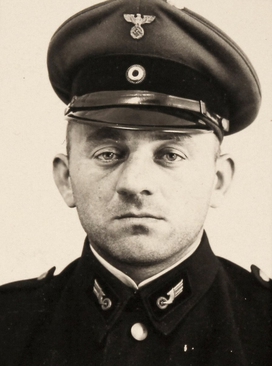
1912 - 1941
Paul Ogorzow
Summary
Name:
Nickname:
The S-Bahn MurdererYears Active:
1939 - 1941Birth:
September 29, 1912Status:
ExecutedClass:
Serial KillerVictims:
8+Method:
Strangulation / Stabbing / BludgeoningDeath:
July 26, 1941Nationality:
Germany
1912 - 1941
Paul Ogorzow
Summary: Serial Killer
Name:
Paul OgorzowNickname:
The S-Bahn MurdererStatus:
ExecutedVictims:
8+Method:
Strangulation / Stabbing / BludgeoningNationality:
GermanyBirth:
September 29, 1912Death:
July 26, 1941Years Active:
1939 - 1941bio
Paul Ogorzow was born on September 29, 1912, in Muntowen, East Prussia, which is now known as Muntowo in Poland. He was the illegitimate child of Marie Saga, a farm worker. After his birth, his grandfather filled out his birth certificate, officially naming him Paul Saga.
In 1924, when Paul was 12 years old, he was adopted by Johann Ogorzow, a farmer living in Havelland. Paul took his adoptive father's last name as his own. At a young age, he started working as a laborer on a farm in Nauen. He later moved on to a steel foundry in Brandenburg-an-der-Havel and eventually settled in Berlin.
When Paul turned 18, he joined the Nazi Party. As the Party gained power, he rose through the ranks. By the time of his capture, he held the title of Scharführer, which means squad leader, in the SA, the party's paramilitary branch.
In 1934, Paul was hired as a platelayer by Deutsche Reichsbahn, the national railroad. He worked on the S-Bahn commuter rail system in Berlin. Paul advanced in his job and became an assistant signalman at the Rummelsberg depot, located in the eastern suburbs of the city.
In 1937, Paul married Gertrude Ziegelmann, who was a saleswoman. Gertrude was two years older than Paul. They had two children together, a son and a daughter. At first, the family lived with Paul's mother in a working-class area of Berlin. Later, they moved to another apartment in Karlshorst, closer to his workplace. Paul was often seen playing with his children and working in his garden, which included a small cherry orchard.
Paul traveled to work daily by train, on foot, or by bicycle. His co-workers regarded him as reliable and competent. He often worked in a signal box at Zobtener Straße, where the VnK Railway meets the S-Bahn. Paul was also dispatched to various locations along the S-Bahn, always wearing his uniform. However, at his trial, his wife described him as often becoming violent and abusive at home.
murder story
In late August 1939, Paul Ogorzow began a series of violent attacks in Berlin. He targeted women in the Friedrichsfelde district, where many were alone at home because their husbands were serving in the military. Over the next year, he assaulted and raped dozens of women, with police linking 31 separate attacks to him. Victims reported that Ogorzow wore a railway worker's uniform during the assaults, where he often choked, threatened with knives, or bludgeoned them.
Ogorzow's attempts at murder were initially unsuccessful. Between August 1939 and July 1940, he stabbed three women, all of whom survived and later testified against him. His first successful murder occurred on October 4, 1940, when he killed 20-year-old Gertrude "Gerda" Ditter. He returned to killing in December, murdering two more women: Elfriede Franke, who had her skull crushed, and 19-year-old Irmgard Freese, who was raped and bludgeoned.
On December 22, 1940, the body of Elisabeth Bungener was found alongside the tracks, and further investigations confirmed she had died from a fractured skull. Gertrude Siewert was discovered a few days later after being thrown from a train, and she died in the hospital from her injuries. Another victim, Hedwig Ebauer, was also found after being thrown from the train; she was pregnant and did not survive.
On February 11, 1941, the remains of Johanna Voigt were located, confirming a pattern in the murders linking them to a single individual. Victims who survived identified their attacker as a railway employee in a black uniform. By December 1940, investigators, hindered by media censorship from the Nazi regime, began looking for suspects.
Despite a police operation that involved interviewing thousands of railway employees, Ogorzow managed to evade capture for months. He killed his final victim, Frieda Koziol, on July 3, 1941. After reports surfaced linking him to the latest murder, he was arrested on July 12, 1941. During interrogation, he confessed to multiple crimes, revealing his misogynistic views and blaming them on alcoholism.
Ogorzow was ultimately convicted of eight murders, six attempted murders, and thirty-one counts of sexual assault. He received a death sentence on July 24, 1941, and was executed by guillotine at Plötzensee Prison two days later.